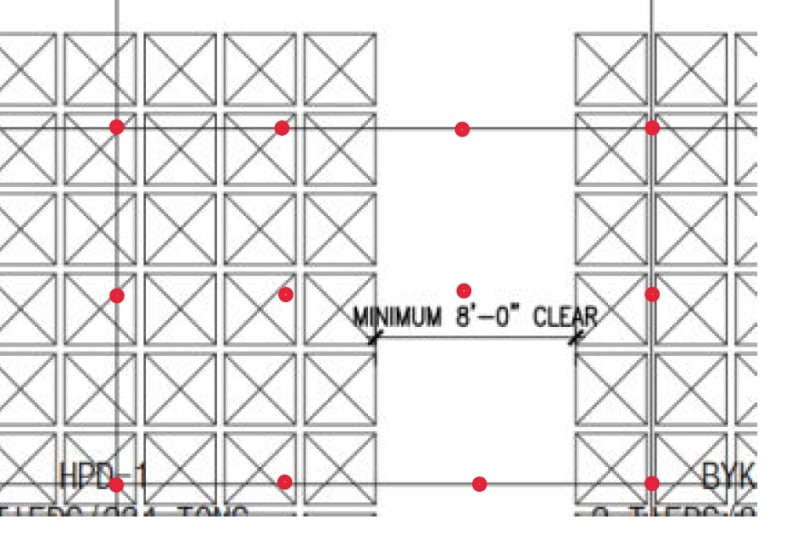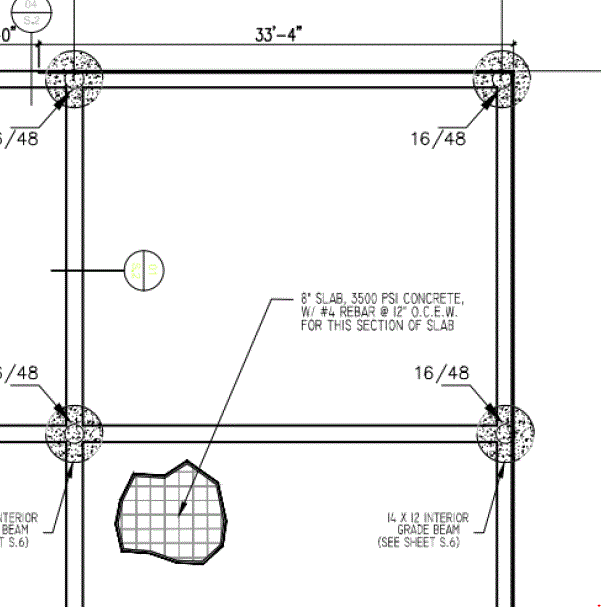Dear Engineer friends,
I'm having an intern at my current company.
My boss gave a task on checking if the belled caisson foundation system can or can not support the warehouse upon it.
The belle caisson has spec of bottom diameter = 48", column diameter = 16", belled section angle = 45 degrees. and the overall height = 11'(exterior foundtion), = 14' (interior foundation)
while the goetech report says the soil around is FAT CLAY (CH) (0=20' under ground) with cohesion of 750 psf - 1000 psf, soil unit weight of 115 pcf, water level at 17' under the gorund.
I'm using the Ultimate Capacity equation to get the individual maximum load of the caisson.
Ultimate capacity of the belled caisson = ultimate end bearing capacity + ultimate skin friction - unit concrete weight of the caisson.
Since the resource that I found was in SI unit system, I transferred all values into kpa and kN.
Since the adhesion factor is not given, I use 0.5 as the adhesion coefficient, and used 0.150 kip/pcf for the concrete density.
In values I got 96.36kip * 30 = 2900 kip < (3120 kip)
After my calculation, my result shows me that 30 caission system (18 exterior caission, 12 interior caissions) is not able to hold the building system (steel frame 140 kip, concrete slab 1320 kip, live load 1660 kip).
But my head engineer said that I used wrong way to calculate the caission.
what is the proper way to calculate?
I'm having an intern at my current company.
My boss gave a task on checking if the belled caisson foundation system can or can not support the warehouse upon it.
The belle caisson has spec of bottom diameter = 48", column diameter = 16", belled section angle = 45 degrees. and the overall height = 11'(exterior foundtion), = 14' (interior foundation)
while the goetech report says the soil around is FAT CLAY (CH) (0=20' under ground) with cohesion of 750 psf - 1000 psf, soil unit weight of 115 pcf, water level at 17' under the gorund.
I'm using the Ultimate Capacity equation to get the individual maximum load of the caisson.
Ultimate capacity of the belled caisson = ultimate end bearing capacity + ultimate skin friction - unit concrete weight of the caisson.
Since the resource that I found was in SI unit system, I transferred all values into kpa and kN.
Since the adhesion factor is not given, I use 0.5 as the adhesion coefficient, and used 0.150 kip/pcf for the concrete density.
In values I got 96.36kip * 30 = 2900 kip < (3120 kip)
After my calculation, my result shows me that 30 caission system (18 exterior caission, 12 interior caissions) is not able to hold the building system (steel frame 140 kip, concrete slab 1320 kip, live load 1660 kip).
But my head engineer said that I used wrong way to calculate the caission.
what is the proper way to calculate?



